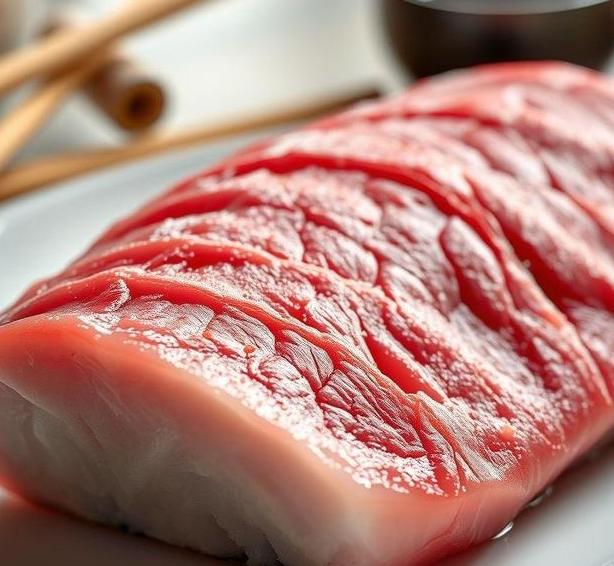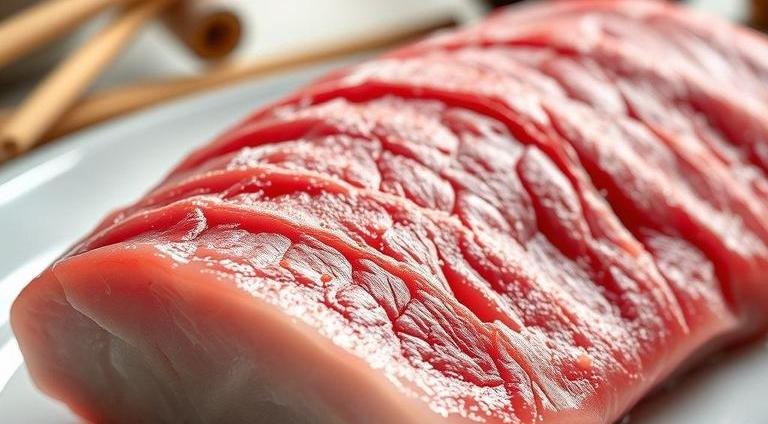When it comes to sushi, there’s nothing quite like fresh, high-quality fish. Among the top choices is tuna-particularly the coveted "sushi-grade" tuna. This fish is revered for its delicate texture, deep, rich flavor, and the way it literally melts in your mouth when served raw. But here’s the thing: sushi-grade tuna is not just something you pick up on a whim. It’s more like a specialty product, one that requires proper care, handling, and storage to ensure it stays safe for consumption.
The big question many people have is: Can sushi-grade tuna go bad?
The answer is yes. Even the finest sushi-grade tuna can spoil, but with the right knowledge and precautions, you can maximize its shelf life and enjoy it at its peak. Let’s dive into the details of how to tell if your sushi-grade tuna is still fresh, how long it lasts, and the best practices for storing it. By the end of this guide, you’ll feel like a sushi expert when it comes to keeping your tuna in top-notch condition.
Can Sushi Grade Tuna Go Bad?
Absolutely. Despite the reputation of sushi-grade tuna being synonymous with freshness, it’s still a perishable product, which means it can go bad. Here’s the thing: "sushi-grade" or "sashimi-grade" doesn’t mean the tuna is immortal. It simply refers to tuna that has been frozen at a certain temperature to kill parasites, making it safe for raw consumption.
However, sushi-grade tuna is still vulnerable to spoilage just like any other fresh fish. It can develop bacteria, start to smell off, or lose its texture if it’s not stored correctly or if it sits around too long. The term ’sushi-grade’ is more about its initial state, not its longevity.
What affects how long it stays fresh? The factors are mostly tied to temperature, time, and how the fish is handled. So, let’s explore those factors in detail.
Shelf Life For Sushi Grade Tuna

How long can you expect your sushi-grade tuna to stay fresh? Well, the shelf life is influenced by several things, and knowing them will help you gauge how much time you have before your tuna starts losing quality.
- Fresh, Unfrozen Sushi Grade Tuna: When you get sushi-grade tuna fresh from the market, it has a very limited shelf life, usually between 1 to 2 days. After that, the tuna begins to break down, and bacteria starts to multiply, even if it’s kept in the fridge. So, it’s critical to consume it as soon as possible to experience it at its prime.
- Frozen Sushi Grade Tuna: If your tuna was frozen to begin with, it can last a lot longer, typically up to 3 months in the freezer. However, this is if it’s stored properly-more on that in the next section. After that, even frozen tuna can start losing its texture, flavor, and safety for raw consumption.
- Thawed Sushi Grade Tuna: Once you thaw frozen sushi-grade tuna, the clock starts ticking again. Ideally, you should eat thawed tuna within 24 hours. This is because the process of freezing and thawing can affect the fish’s structure and quality.
In short, tuna doesn’t last forever, but by storing it right, you can maximize its life. Let’s move on to how you can identify when your sushi-grade tuna is no longer safe to eat.
Common Signs Of Spoilage
Knowing what to look for when it comes to spoiled sushi-grade tuna is crucial. Even if you’ve followed all the storage rules, you should always check the fish before consuming it. Here are some key signs that your tuna has gone bad:
-
Off Smell
- Fresh sushi-grade tuna has a clean, slightly oceanic smell-no strong or pungent odor. If it smells sour, fishy, or like ammonia, that’s a clear sign it’s past its prime.
-
Discoloration
- Fresh tuna should have a vibrant, rich color, usually a deep red or pinkish hue. If it starts turning dull or brownish, this could indicate oxidation, which means it’s beginning to spoil. While slight discoloration may be a natural part of aging, major changes are a red flag.
-
Slimy Texture
- Raw tuna should feel firm to the touch, with a slight resistance when you press on it. If the surface feels slimy or overly mushy, this is often due to bacterial growth, and you should not eat it.
-
Dryness
- If your tuna starts to dry out and lose moisture, it’s a sign that it’s been sitting too long, possibly out of the fridge or improperly stored.
-
Unusual Taste
- Even if the tuna looks okay, the taste will always tell you a lot. If you take a bite and it has a weird or sour aftertaste, that’s a clear sign of spoilage.
If you notice any of these signs, it’s better to be safe and discard the tuna. Eating spoiled fish can lead to foodborne illnesses, and you don’t want to risk that.
How To Store Sushi Grade Tuna?

Storing sushi-grade tuna properly is critical to making sure it stays fresh for as long as possible. While it’s always best to consume it quickly after purchase, there are a few tips to extend its shelf life.
-
Refrigeration (for Fresh Tuna)
- Keep fresh sushi-grade tuna in the coldest part of your refrigerator, ideally between 32°F to 38°F (0°C to 3°C).
- Store it in an airtight container or wrap it tightly in plastic wrap and then place it in a resealable bag. This prevents exposure to air, which speeds up oxidation.
- For extra precaution, you can also place the tuna on a shallow pan or tray, then surround it with crushed ice to maintain a stable cold temperature. Just make sure the tuna isn’t sitting directly in water.
-
Freezing (for Long-Term Storage)
- If you’re not going to eat the tuna within a day or two, freezing it is the best option. Wrap it tightly in plastic wrap or vacuum-seal it to minimize exposure to air.
- Label the package with the date you’re freezing it so you can track how long it’s been stored.
- For best results, freeze it at -4°F (-20°C) or lower. This ensures the tuna stays at its highest quality.
-
Thawing
- When you’re ready to use frozen tuna, thaw it in the refrigerator, not on the counter, to prevent bacterial growth. Ideally, you should give it 12-24 hours to thaw, depending on the size of the piece.
- Avoid refreezing once it’s been thawed.
Expert Tips
- Buy from a reputable source: Look for suppliers that offer sushi-grade tuna and have a solid reputation for freshness. Ask questions about how the tuna was handled and whether it’s been frozen to the appropriate standards.
- Keep it cold at all times: Fish is highly perishable, and one of the main ways it spoils is by being exposed to warmth. Always keep tuna chilled, and don’t let it sit at room temperature for more than two hours (or one hour if it’s particularly hot).
- Use a thermometer: If you’re serious about getting your tuna at the ideal temperature, invest in a thermometer for your fridge and freezer. This will help you avoid any fluctuation in temperature that could accelerate spoilage.
- Check the label: If you’re buying pre-packaged sushi-grade tuna, always check for the ’use by’ date, and if possible, ask when it was packaged or caught. This helps you determine how much shelf life is left.
FAQs
What Does ’sushi Grade’ Tuna Mean?
Sushi grade tuna refers to fish that is considered safe to eat raw, typically frozen to a specific temperature to kill parasites. However, the term ’sushi grade’ is not universally regulated, so it’s more of a marketing term indicating high-quality fish suitable for raw consumption.
Can Sushi Grade Tuna Go Bad If Left Out At Room Temperature?
Yes, sushi grade tuna can go bad if left out at room temperature for more than 2 hours. Bacteria can rapidly multiply at room temperature, making the fish unsafe to consume even if it was initially sushi grade.
How Long Can Sushi Grade Tuna Be Stored In The Fridge?
Sushi grade tuna should be consumed within 1 to 2 days if stored in the fridge at or below 40°F (4°C). The freshness can deteriorate quickly, even when refrigerated.
Can Frozen Sushi Grade Tuna Go Bad?
Frozen sushi grade tuna can go bad if it is not stored at a constant temperature of 0°F (-18°C). If thawed and refrozen, the quality and safety of the tuna may be compromised, increasing the risk of bacterial growth and spoilage.
How Can You Tell If Sushi Grade Tuna Has Gone Bad?
Signs that sushi grade tuna has gone bad include an off-putting sour smell, slimy or discolored texture, and a change in color from bright red to brown or gray. If the tuna feels mushy or sticky, it is likely spoiled.
Does Sushi Grade Tuna Spoil Faster Than Regular Tuna?
Yes, sushi grade tuna spoils faster than regular tuna because it is typically handled more delicately to preserve its freshness for raw consumption. Regular tuna may be processed for longer shelf life with added preservatives.
How Can You Safely Thaw Sushi Grade Tuna?
To thaw sushi grade tuna, place it in the refrigerator for several hours or overnight. Thawing it slowly ensures the texture and flavor are maintained. Avoid thawing it at room temperature, as it can encourage bacterial growth.
Is It Safe To Eat Sushi Grade Tuna After It Has Been In The Fridge For 3 Days?
It is not recommended to eat sushi grade tuna after 3 days in the fridge. Even if properly stored, its freshness and safety may be compromised beyond 1 or 2 days, making it a health risk.
What Happens If You Eat Spoiled Sushi Grade Tuna?
Eating spoiled sushi grade tuna can lead to food poisoning, with symptoms like nausea, vomiting, diarrhea, and stomach cramps. Spoiled fish may contain harmful bacteria such as Salmonella, Listeria, or Vibrio, which can cause serious illness.
Can Sushi Grade Tuna Be Safely Eaten After Being Frozen For Several Months?
If sushi grade tuna has been properly frozen at 0°F (-18°C) for several months, it may still be safe to eat. However, the texture, flavor, and overall quality may deteriorate over time, so it’s best to consume it within 3 months for optimal freshness.